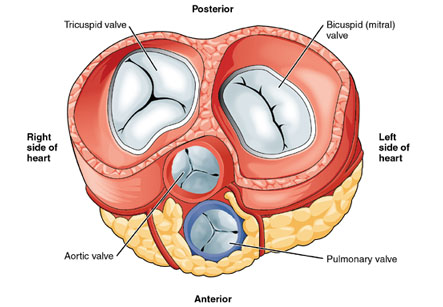Heart Valve Surgery
Introduction
Defects in the valves that regulate the blood flow between the cambers of the heart may sometimes require surgery. The commonest abnormality is seen in the mitral valve that separates the two heart chambers – atrium and ventricle on the left side of the heart. When, for example this valve is floppy or loose – a condition called mitral regurgitation, it does not separate the chambers appropriately. This may lead to increase in the left ventricle size and decreased blood flow to the body. Both of these conditions may lead to heart failure. Another common valve defect is in the aortic valve that lies at the mouth of the heart from where it pumps blood to the rest of the body.
Surgical procedure
For patients with a mitral valve regurgitation or MR or a mitral valve prolapsed – MVP, surgery may be of two types, repair or replacement. These surgeries may be performed by opening up the heart – open heart surgery on via a minimally invasive surgery procedure.
Full recovery from heart valve surgery can take several months.
In most cases the patient is rendered unconscious by general anesthesia. The surgery may last up to 5 or 6 hours. For an open heart procedure the chest is cut open and the patient is put on a heart lung machine. This machine – during the operation works as the patient’s own heart and lungs while the surgeons work.
Iran is among the top 10 countries in treating cardiovascular diseases, while it ranks first in the Middle East

The heart muscles are deprived of blood and oxygen during the procedure and are preserved by cooling. Thereafter the damaged mitral valve is repaired or replaced with an artificial valve. The decision of repair or replacement depends on the state of damage. Sometimes other valves of the heart like the aortic valve may also need correction.
Recovery and post operative considerations
After the surgery the patient is removed from the heart lung machine and is allowed to function with his own heart and lungs. The heart is given stimulant medications and is warmed up to restore the heart beat. Then the chest is sewn up with a drain to remove excess fluids. The incision is bandaged. Thereafter the patient may need to remain in the Intensive Care Unit (ICU) of a hospital. Full recovery from heart valve surgery can take several months. Recovery includes healing of the surgical incision, gradually return to physical exertions, and exercising.
In most patients a valve surgery corrects the heart failure symptoms of shortness of breath and fatigue. Common complications include bleeding, infections and dislodgement of blood clots. The latter may need to be prevented by taking regular blood thinners. These blood clots may get lodged in the lungs or brain leading to life threatening consequences. Complications associated with general anesthesia are rare but present.
Many artificial valves need to be replaced after 8 to 15 years. In patients with valve prolapsed repair is thus preferred over an artificial valve replacement. Determinants of health, healthy lifestyle and initial patient condition determine the results of the operation. In patients with less severe valve damage at the outset the results may be favorable.